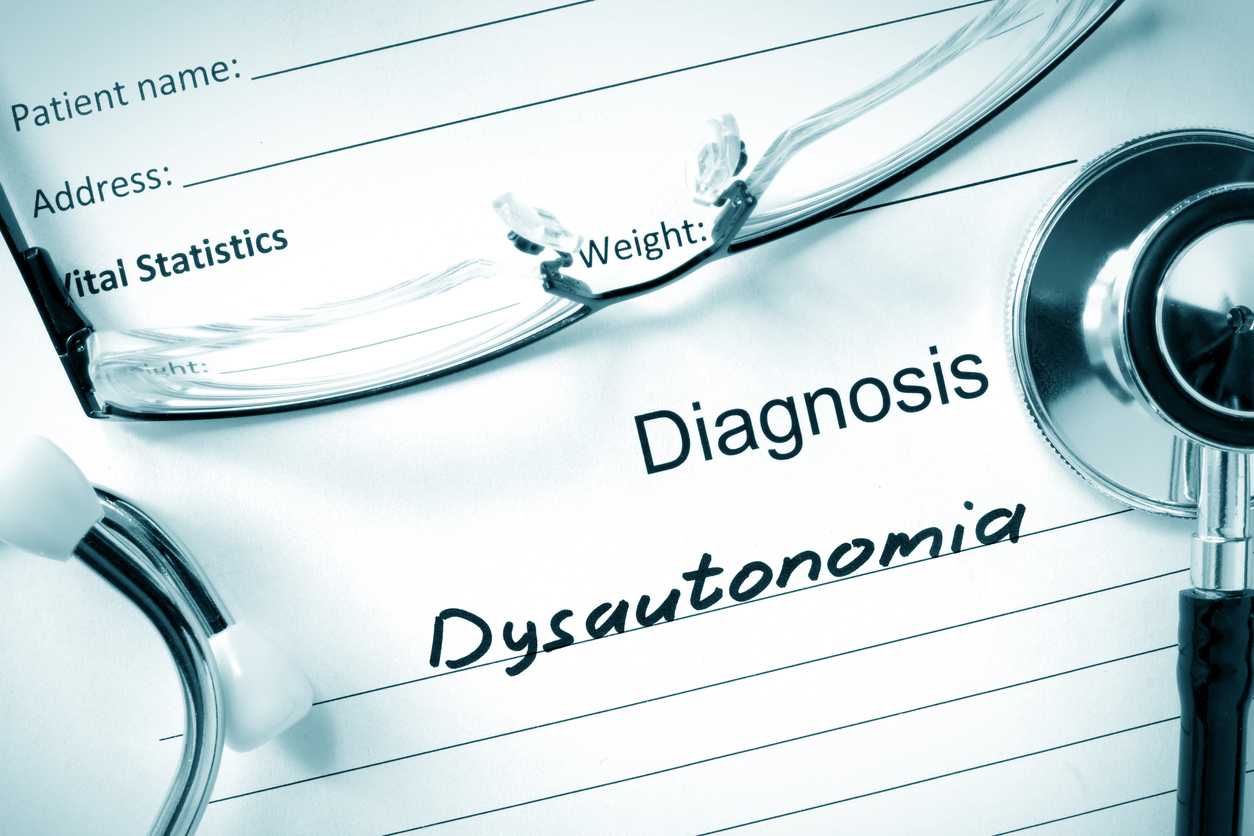What is Dysautonomia?
Dysautonomia, also known as autonomic dysfunction or autonomic neuropathy, is an umbrella term for auto-immune disorders that are caused by your autonomic nervous system. Contrary to what it may sound like, dysautonomia is not a final diagnosis. It is more of a focus point or a name for co-existing symptoms. This means – you now know where and what system of the body the problem lies in, and now it is time to pinpoint and treat it.
In order to understand dysautonomia, it is important to first understand both the nervous system and the autonomic nervous system. The nervous system is your body’s system of communication. Your brain fires neurons that instruct your body what to do. These neurons allow you to move, think, breathe, and perform many daily activities. The nervous system is comprised of two main parts – the first being your central nervous system. The central nervous system consists of your brain and spinal cord, but the other half of the nervous system is known as the peripheral nervous system, which happens to contain your somatic nervous system and your autonomic nervous system. Your somatic nervous system controls your intentional and voluntary movements, such as walking, shaking hands, dancing, etc. On the other hand, your autonomic nervous system controls your “automatic” or involuntary movements such as breathing, blinking, digestion, temperature regulation, and heart rate. Dysautonomia syndrome is a syndrome that occurs when there are problems and/or disorders with the autonomic nervous system. The most common symptoms that are found in individuals who have dysautonomia include:
- Anxiety
- Dizziness/vertigo
- Insomnia
- Difficulty exercising
- Constipation
- Low blood pressure or hypotension
- Brain fog
- Tachycardia
- Blurry, double, and/or tunnel vision
Types of Dysautonomia
However, there are many distinct types of dysautonomia since dysautonomia is a generalized term for disorders stemming from issues of the autonomic nervous system. A few conditions that are considered dysautonomia include, but are not limited to:
- Postural Orthostatic Tachycardia Syndrome (POTS)
- Parkinson’s Disease
- Ehlers-Danlos Syndrome
- Multiple system atrophy
- Autoimmune autonomic ganglionopathy
- HIV/AIDS
There are, however, two main types of dysautonomia. There is primary dysautonomia, which is when the dysautonomia is inherited and chronic in nature, and then there is secondary dysautonomia. This latter condition occurs when there is an injury to the autonomic nervous system, usually caused by a separate medical issue. Some causes of dysautonomia are alcoholism, diabetes, long COVID, auto-immune disorders, and more.
Living with Dysautonomia
Unfortunately, there is no cure for dysautonomia. This means that it will never go away completely. However, there are plenty of strategies and treatments that can be used to help manage it. With therapy and management, you can still experience and maintain an exceptional quality of life. If you follow the right treatment plan, then chances are you will notice either a vast improvement or a total reduction of symptoms. We are confident that you will find what works for you.
Finding the Right Physician
When treating dysautonomia, it is important to ensure your physician has an in-depth understanding of your condition. If possible, we recommend connecting with a specialist. This is because dysautonomia is such a broad syndrome, encompassing so many parts of the body, treatment can take a while. With dysautonomia, it is common for doctors to attempt a “trial and error” kind of approach. Your doctor should work with you to ensure that you have a voice and a say in your treatment.
Diet Adjustments
It is extremely important for everyone from all walks of life to follow a healthy diet full of whole foods, fruits, vegetables, and lots of water. The same goes for those living with dysautonomia. No matter who you are, if you are filling yourself with artificial sugars, processed foods, and other unhealthy foods, you are bound to feel a little under the weather. This can be exemplified with people living with dysautonomia, so it is important to follow a diet that works for you and your body. What works for some may not work for others. For example, some people report that consuming caffeinated beverages helps relieve their symptoms while others may experience a worsening of symptoms. Similarly, to the trial-and-error approach that your physician may take with your treatment, you should also consider viewing your diet adjustments as trial and error. Everybody is different, It is just a matter of finding what works for you.
Medication
It is not uncommon for doctors to prescribe you medication to help manage your symptoms. Some drugs that are commonly prescribed to treat symptoms of dysautonomia are:
- Antidepressants
- Anti-anxiety medication
- Blood-pressure increasing medication
- Non-steroidal anti-inflammatory drugs
- Amphetamine drugs
It is important to note that these drugs will not be used as an attempt at curing your dysautonomia, but as an attempt at lessening or hopefully even eliminating any symptoms. There is, unfortunately, no “one-for-all” medication either. Some medications that work well for others may not work for you. Finding the right prescriptions for you takes time and may take many trials.
Exercise
It can sometimes be difficult to find the time, motivation, and energy to exercise. These issues are only exacerbated for people living with dysautonomia, considering the physical strain the condition can add. When living with dysautonomia, it is vital to stay active and fit, no matter how impossible it may seem at first. It is also important to find a “happy medium” of exercise – not too much and not too little because dysautonomia can affect your blood pressure and your heart’s rate and performance. It is important to monitor these things before, during, and after exercising. Not only will this help ensure you are not over-exerting your body, but it can also be an extremely useful tool in helping you find the right balance of strenuous activity.
Just Breathe
We know how upsetting it can be to live with dysautonomia. It can feel hopeless and like there is no end in sight. However, that is not the case. More than 70 million people (about twice the population of California) worldwide live with the condition. It affects people of all races, gender, and age, and because of this, much research has been done on the condition, allowing many physicians to specialize in it and find breakthroughs in treatment. You are not alone. There are many support systems in place – including us! We hope you will allow us to aid you in managing your health. Please feel free to send us a message with any questions, concerns, and any thoughts you would like to share with us. Plus, if you learned something new, comment what it was! We love to hear from our readers, and we hope to connect with you soon.




